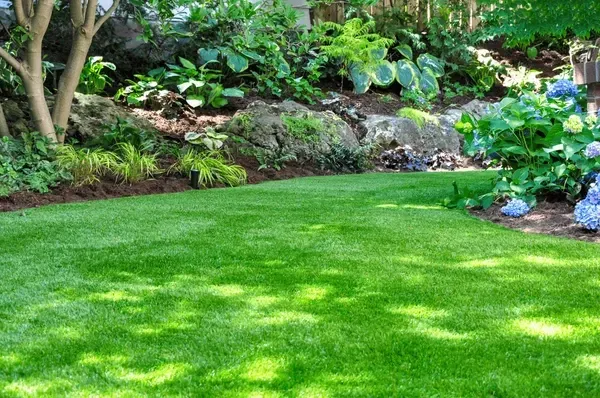Shade Gardening Tips for Connecticut Homeowners: Plants and Design Ideas
Learn More About Plant and Design Ideas for Your Next Garden Project

Shade gardening presents unique challenges and opportunities for Connecticut homeowners. With its diverse climate and landscape, Connecticut offers an ideal environment for cultivating beautiful shade gardens. Whether you're dealing with dappled shade under trees or full shade areas, understanding the right plants and design strategies is crucial for success. In this comprehensive guide, we'll explore shade gardening tips specifically tailored to Connecticut landscapes. From plant selection to design ideas, Avalanche Landscaping will help you transform your shady spots into thriving outdoor sanctuaries.
Understanding Shade Conditions
Before diving into shade gardening tips, it's essential to understand the different types of shade conditions your garden may face. Shade can vary from light or dappled shade, typically found under deciduous trees, to full shade areas with minimal sunlight exposure throughout the day. Assessing the level of shade in your garden will inform your plant selection and design choices.
Choosing the Right Plants: Selecting shade-tolerant plants is key to a successful shade garden in Connecticut. Here are some popular options suited for various shade conditions:
- Hostas: Known for their lush foliage, hostas thrive in partial to full shade and come in a variety of sizes and colors, making them versatile additions to any shade garden.
- Ferns: With their elegant fronds, ferns are well-suited for moist, shady areas. Connecticut's climate provides an ideal habitat for ferns such as the Ostrich Fern and Christmas Fern.
- Hydrangeas: These classic flowering shrubs are a staple in Connecticut gardens. While they prefer partial shade, certain varieties like the Oakleaf Hydrangea can tolerate full shade conditions.
- Astilbes: Loved for their feathery plumes of flowers, astilbes are perfect for brightening up shady corners. They thrive in moist soil and partial shade.
- Hellebores: Also known as Lenten roses, hellebores are early-blooming perennials that thrive in the dappled shade of deciduous trees. Their nodding flowers add charm to any shade garden.
Design Ideas for Shade Gardens
Incorporating thoughtful design elements can enhance the beauty and functionality of your shade garden. Here are some design ideas to consider:
- Layering: Create visual interest and maximize space by layering plants according to height. Tall trees or shrubs can provide a canopy for understory plants like ferns and hostas, while groundcovers fill in the lower layers.
- Color Contrast: Use foliage and flower colors to add contrast and depth to your shade garden. Pair dark green hostas with brightly colored astilbes or intersperse white-flowering plants for a striking effect.
- Texture Mixing: Experiment with different leaf shapes and textures to add dimension to your garden. Combine the fine foliage of ferns with the bold leaves of ligularia or heuchera for a dynamic composition.
- Pathways and Seating Areas: Incorporate winding pathways or secluded seating areas to encourage exploration and relaxation within your shade garden. Natural materials like gravel or flagstone complement the woodland aesthetic.
- Container Gardens: Utilize containers filled with shade-loving plants to add vertical interest and mobility to your garden. Place containers strategically around seating areas or focal points for added impact.
How can I improve soil drainage in a shady garden?
Improving soil drainage in a shady garden is crucial for the health and vitality of plants, as excessive moisture can lead to root rot and other issues. Here are several effective methods to enhance soil drainage in shady areas:
- Assess Soil Composition: Begin by assessing the soil composition in your shady garden. Soil with a high clay content tends to drain poorly, while sandy soil drains more quickly. Adding organic matter like compost can improve soil structure and drainage.
- Raised Beds: Consider creating raised beds in areas with poor drainage. Raised beds allow for better control of soil composition and drainage, as excess water can drain away more easily.
- Install Drainage Systems: In areas where water tends to pool, installing drainage systems such as French drains or perforated pipes can effectively redirect excess water away from plant roots.
- Plant Selection: Choose plants that are adapted to shady, moist conditions and have good drainage tolerance. Native shade-loving species like ferns, astilbes, and heucheras are excellent choices for such environments.
- Mulching: Apply a layer of organic mulch, such as shredded bark or compost, to the soil surface. Mulch helps regulate soil moisture levels by reducing evaporation and preventing soil compaction, thus improving drainage.
- Avoid Overwatering: Be mindful of watering practices, especially in shaded areas where moisture tends to linger. Water deeply but infrequently to encourage deeper root growth and prevent waterlogging.
By implementing these strategies, you can significantly improve soil drainage in your shady garden, creating a healthier environment for your plants to thrive. Regular monitoring and maintenance will ensure long-term success in managing soil moisture levels and promoting optimal plant growth.
Trust Only The Best Like New Haven Landscaping
At New Haven Landscaping, we understand the unique challenges and opportunities of gardening in Connecticut's diverse landscape. With years of experience in tree care, lawn care, and landscaping services, we're passionate about helping homeowners create beautiful outdoor spaces that thrive year-round. Our team of skilled professionals is committed to providing personalized solutions tailored to your specific needs and preferences. Ready to transform your shade garden into a vibrant oasis? Contact New Haven Landscaping Company today for expert advice, reliable services, and exceptional results. Whether you need assistance with tree service, lawn maintenance, or landscaping design, we're here to help you achieve your outdoor vision.
With the right plants and creative landscaping design ideas, shade gardening in Connecticut can be both rewarding and enjoyable. By selecting shade-tolerant plants suited to Connecticut's climate and incorporating thoughtful design elements, you can create a lush and inviting oasis in even the shadiest corners of your garden. Whether you're a seasoned gardener or just starting out, embrace the beauty of shade gardening and let your creativity flourish amidst the greenery.

